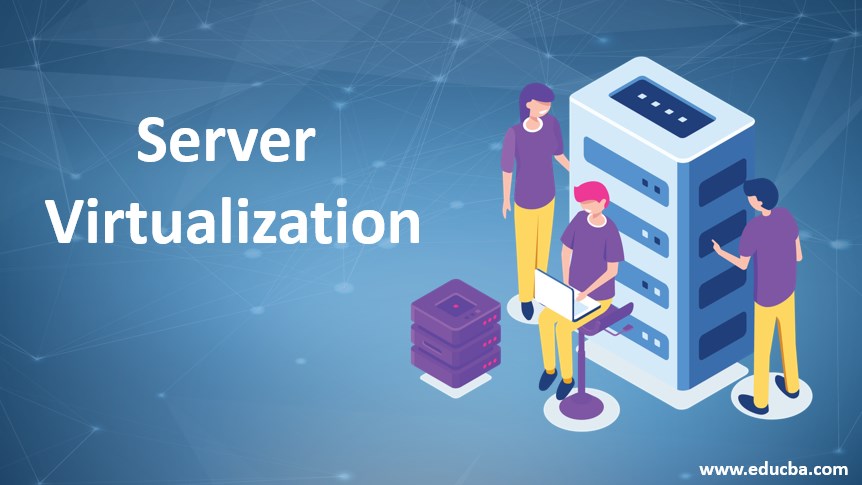Table of Content
Capacity is not as important as performance and reliability. I will configure the server to do a nightly dump to my cold-storage server. Power efficiency is also a consideration with all additional components. The part of Proxmox that I most appreciate is its scriptability. One of my frequent tasks is creating a new VM from a template and then using Ansible to install additional software.

Either way, you can try out the Windows Server version as an evaluation copy for 90 days to decide if you need that or if you can live with just the free Hypervisor version. But if you want to have a lab to learn....then VMware.....see what most larger organisations are using. Get VMware Enterprise evaluation, try out the different functions etc.
Benefits of Monitoring Your Virtual Machines
While we installing the CURL package we are facing below dependency packages issue , requesting you to please provide us the dependency packages to resolve ... Using it now on a dual Xeon motherboard and its working really well. With your budget I would go for a Dell 720 series, SSDs, RAM for your needs, and the 2670v2s. Ram is at a premium right now, so consider getting a server with no ram and sourcing it yourself. Those r710's aren't too bad noise wise, and that has x 3.5 bays, but there is a tower version called the t610. Id also look at something like a dell r710, cheap ram and lots of it, upto 12 cores and a bit faster multithreaded performance.

Connect with your fellow members through forums, blogs, files, & face-to-face networking. I was considering it, but thought building a server might be cheaper. But based on the description of the drives in the listing I would venture to guess they are 2.5" drives. That server came in both variants. So it certainly will be fun, even if you do have an ARM version at your disposal. You can manage the bare Hyper-V server from another computer without it being in AD, but it is much more difficult.
Virtual Machine Model Or Full Virtualization
It has a 10 GbE connection, which I'll probably directly connect to a 10 GbE port on the server. The only valid reason to NOT buy used equipment is if you require mobility or space requirements(maybe power concerns?), which is where custom ITX or NUC builds come into play. I would be running evaluation copies of Windows Server, but as my career in IT grows, I may want at least one full licensed copy to take permanent residence at some point . I know traditionally people prefer to buy used servers, but like used cars and motorcycles, I prefer new since I know for sure how old it is and, as the sole owner, what was done to it. Plus I also get better spec control instead of going with whatever the old processor was.
In a year of usage, I’ve never reached 100% CPU usage, and I’ve only ever exceeded 50% capacity a handful of times, so I would have been fine with just a single CPU. Based on my benchmarks, the CPU was so rarely the limiting factor in my workflows. The most damning evidence is Proxmox’s graph of my CPU usage over time. In the past few months, I’ve never pushed CPU load above 11%, so I’m crazy overprovisioned.
Home virtualized server
Therefore, you have the underlying hardware, an operating system serving as a host, a hypervisor and a guest operating system. A good virtual machine monitoring tool should be able to look at the guest OS layer as well as the virtualization layer, to ensure data from both “sides” matches up. The virtual environment should be treated, not one machine at a time, since you need to keep an eye on your entire virtual infrastructure to reduce VM sprawl and scale effectively. Creating too many virtual machines then leaving them to operate unchecked can cause major performance issues if you don’t have a management tool in place.
You need to download WMWare customizer, the intel driver e1000e already packaged as a VMWare bundle (.vib) and use customized your the iso to include the I217v driver. I recommend you this blogwhich explains this really well. System administrators and advanced users control the hypervisor remotely through an interface called a management console. Before virtualization, you would install an operating system on top of the hardware, making it directly linked to the server.
Oracle VM Server
$2k is a lot to initially spend especially if you don't actually know how to spec a machine/VM. This is not a technical problem, work it out with your management. Regular updates on the platform bring more innovative features by the changing market trends.
You can manage this hypervisor from any Windows 8.1 and up PC with the Hyper-V management role installed on it. I'm not looking to jump into a licensed virtualization solution at home just yet. I'm most familiar with VMware but I read the freebie version is severely gimped compared to other offerings. 1) You will need a Video Card in order to setup the box originally. You should be able to get one built onto the motherboard or go grab a cheap card ar Fry’s.
Although not free at first, Microsoft quickly reduced the price to $0. Microsoft then bundled it’s latest Virtual Server called Hyper-V with the Windows Server 2008. The first thing you need to do is find a nice tower case.

With my VMs running on top of Synology’s storage, I had to shut down my entire VM fleet before applying any update from Synology. It was the same reboot problem I had when I ran VMs on my Windows desktop. Homelab is just a colloquial term that’s grown in popularity in the last few years. Homelab servers are no different from any other servers, except that you build them at home rather than in an office or data center. Many people use them as a low-stakes practice environment before using the same tools in a real-world business context. Don’t waste your money buying a big fancy video card for your Virtual Server host.

No comments:
Post a Comment